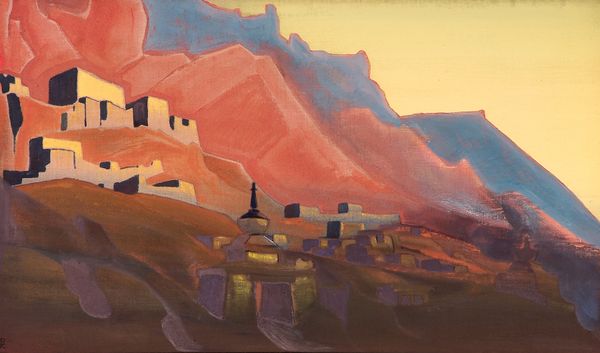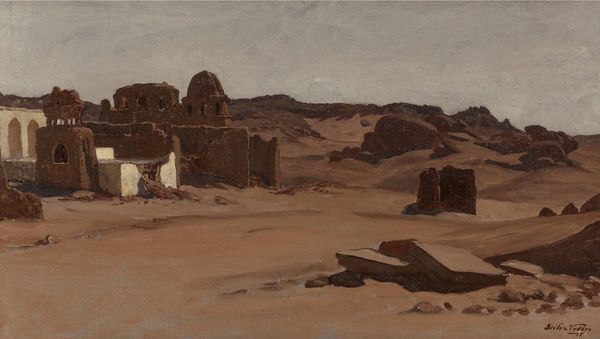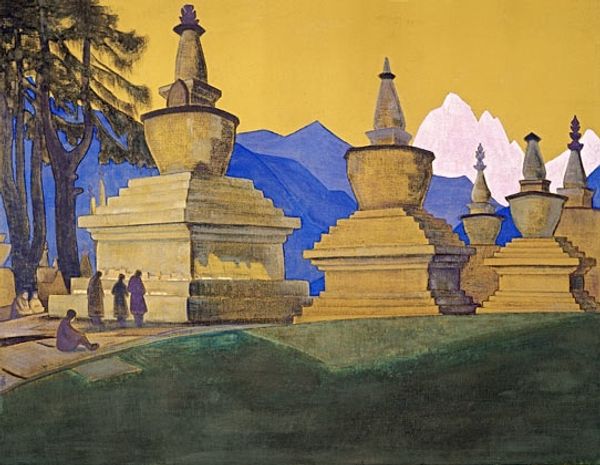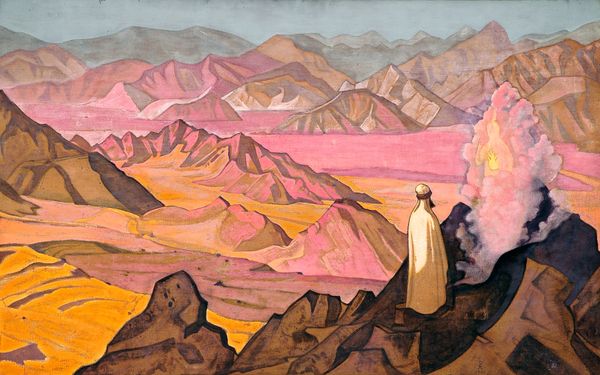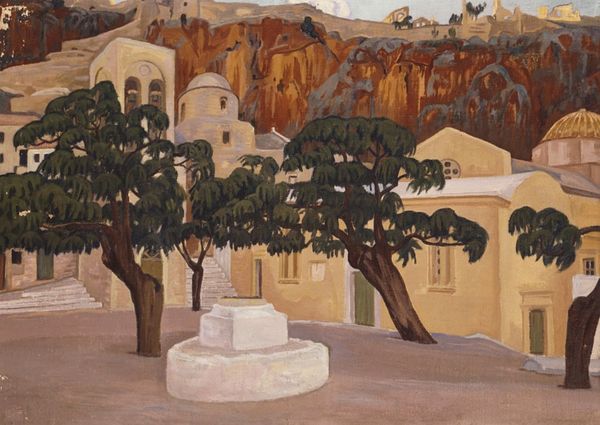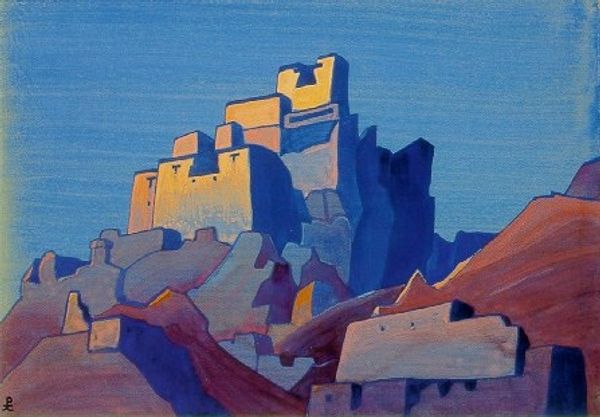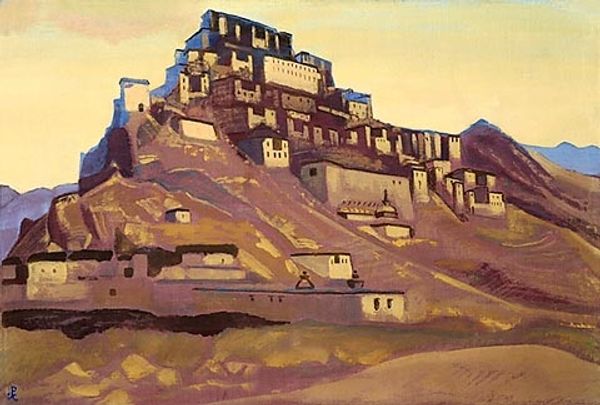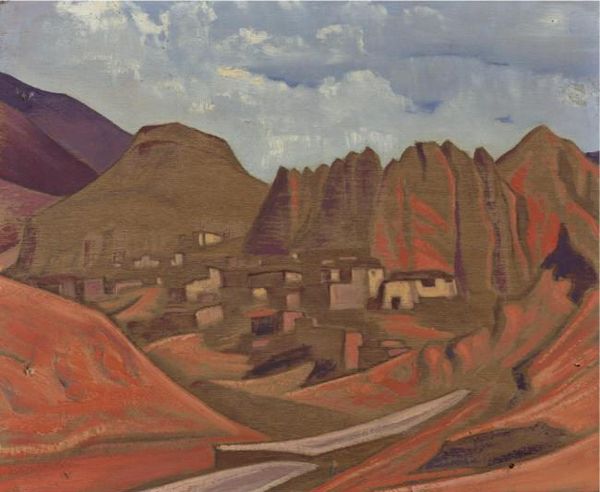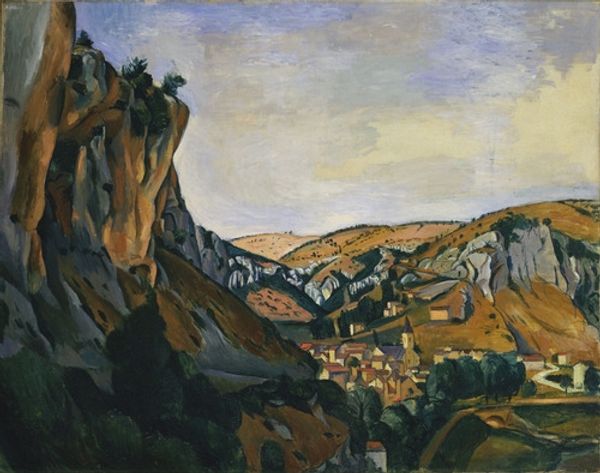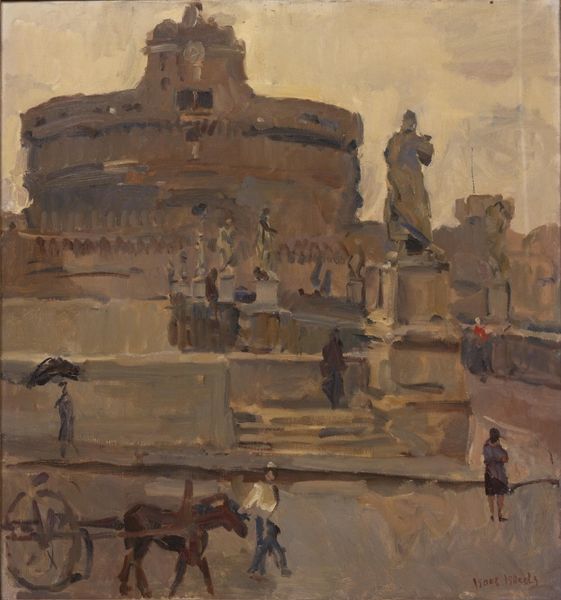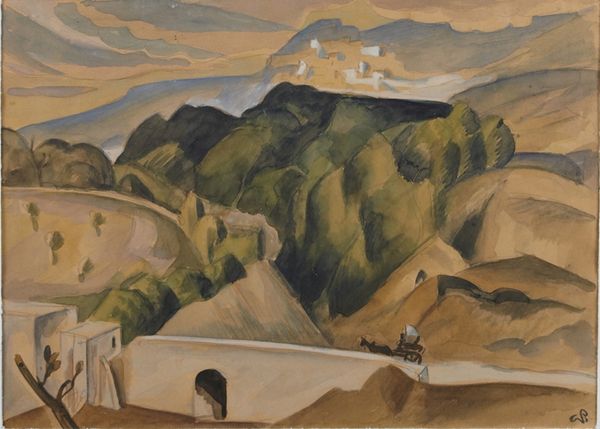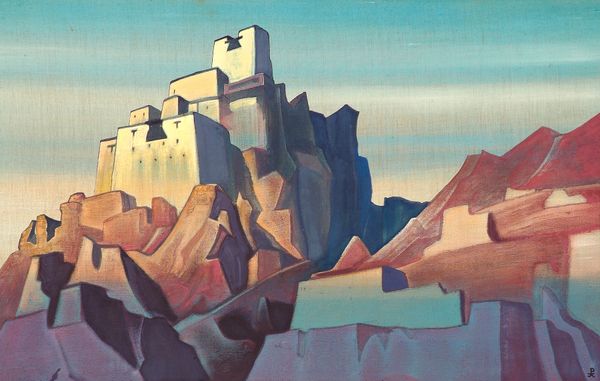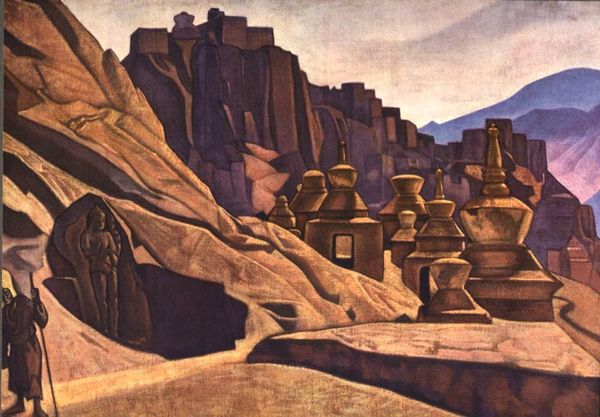
Copyright: Public domain
Editor: This is Nicholas Roerich’s 1925 painting, “Horse of Happyness,” executed in oil. I am immediately struck by how the pale tones create a hazy, almost dreamlike cityscape. The repeated forms feel very iconic. What’s your read on this work? Curator: Roerich, though of Russian origin, was deeply invested in Eastern spirituality and cultural history, which shaped much of his artistic production. He portrays a stylized Asian landscape. Looking at the scene, what cultural and historical associations come to your mind when you see imagery like this presented for Western audiences in the 1920s? Editor: Well, I suppose I’m conscious that it could perpetuate stereotypes. It has a slightly “orientalist” vibe to it, even though he seemed respectful. But if it's framed for Western audiences, it shapes expectations, right? Curator: Precisely. This is when Western fascination with the "Orient" was peaking. Museums and galleries played a key role by both displaying and, perhaps unintentionally, romanticizing these cultures for audiences that did not have a genuine understanding of the place and people. The scale reinforces a kind of grand historical tableau. Who controlled the narrative around that visual language? Editor: The art institutions, of course. It’s all about power, who is doing the representing. So, what do you make of the artist's intention, considering the politics of imagery? Curator: It's complicated. Roerich believed he was building cultural bridges, but intention doesn't negate the potential for misrepresentation or reinforce pre-existing biases. His landscapes tend to evoke an idealized past, influencing how we see and interpret these locations even today. It asks important questions about who gets to interpret whose story. Editor: This really shifted my view. It is no longer a simple, beautiful landscape. Curator: And that’s why context matters. Roerich's work compels us to consider the museum's ongoing role in shaping perspectives of other cultures.
Comments
No comments
Be the first to comment and join the conversation on the ultimate creative platform.
